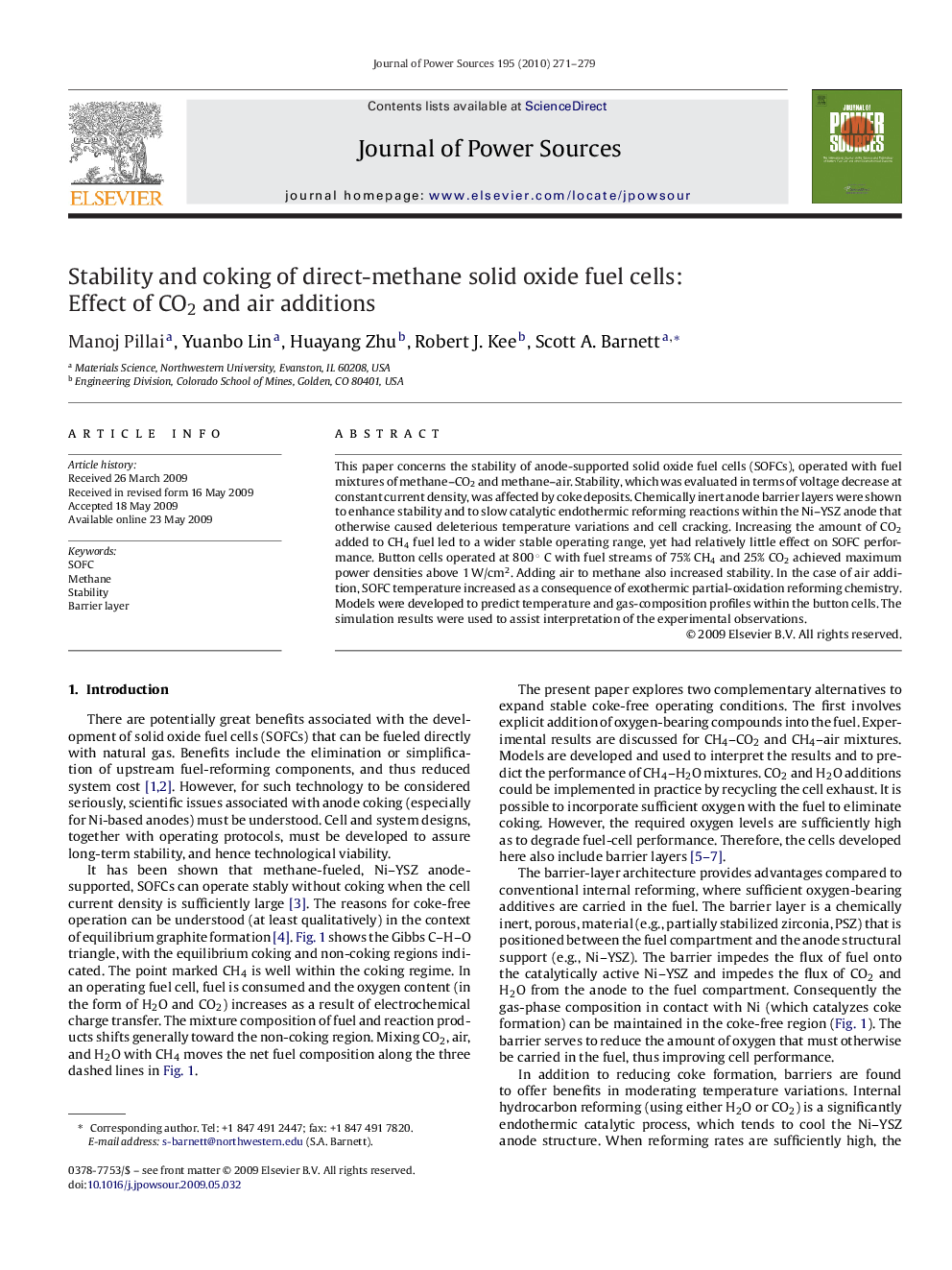| Article ID | Journal | Published Year | Pages | File Type |
|---|---|---|---|---|
| 1293978 | Journal of Power Sources | 2010 | 9 Pages |
This paper concerns the stability of anode-supported solid oxide fuel cells (SOFCs), operated with fuel mixtures of methane–CO2 and methane–air. Stability, which was evaluated in terms of voltage decrease at constant current density, was affected by coke deposits. Chemically inert anode barrier layers were shown to enhance stability and to slow catalytic endothermic reforming reactions within the Ni–YSZ anode that otherwise caused deleterious temperature variations and cell cracking. Increasing the amount of CO2 added to CH4 fuel led to a wider stable operating range, yet had relatively little effect on SOFC performance. Button cells operated at 800 °° C with fuel streams of 75% CH4 and 25% CO2 achieved maximum power densities above 1 W/cm2. Adding air to methane also increased stability. In the case of air addition, SOFC temperature increased as a consequence of exothermic partial-oxidation reforming chemistry. Models were developed to predict temperature and gas-composition profiles within the button cells. The simulation results were used to assist interpretation of the experimental observations.
